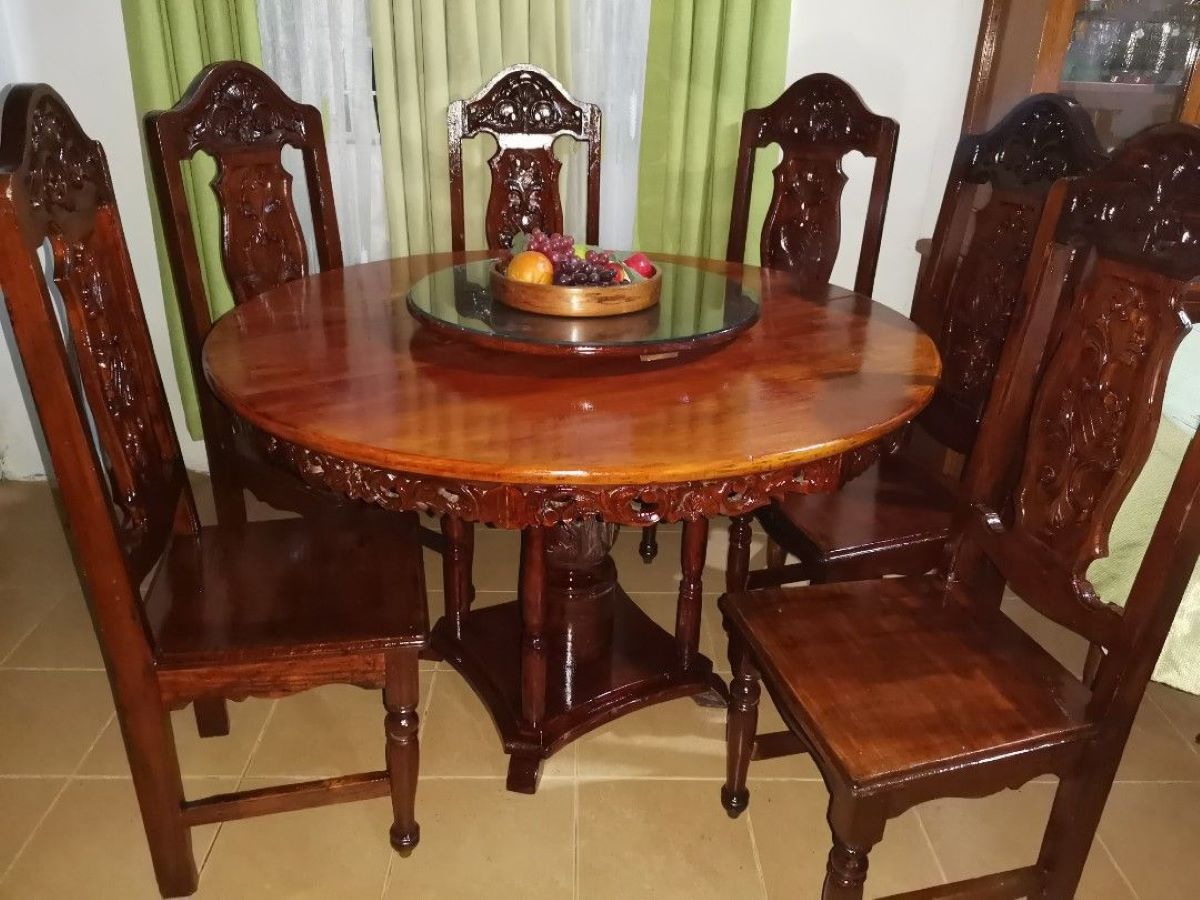

Articles
How Much Is An Antique Dining Room Set Worth
Modified: January 4, 2024
Find informative articles that will help you determine how much an antique dining room set is worth. Explore the value of vintage furniture and make informed buying or selling decisions.
(Many of the links in this article redirect to a specific reviewed product. Your purchase of these products through affiliate links helps to generate commission for Storables.com, at no extra cost. Learn more)
Introduction
Welcome to the fascinating world of antique dining room sets! These beautiful pieces of furniture not only serve a functional purpose but also hold immense historical and aesthetic value. Whether you have recently inherited an antique dining room set or are considering purchasing one, you may be wondering just how much it is worth.
Understanding the factors that determine the value of an antique dining room set can help you make informed decisions regarding its care, authentication, and potential sale. In this article, we will explore the various elements that contribute to the worth of these exquisite pieces and provide guidance on how to assess their value accurately.
An antique dining room set consists of a table and matching chairs, typically crafted from high-quality materials such as hardwoods, like mahogany or oak, or luxurious materials like walnut or rosewood. The sets can range in style from intricately carved Victorian pieces to sleek and minimalist mid-century modern designs. Each set has its unique characteristics that make it valuable, and understanding these factors will give you insight into determining its worth.
When evaluating the value of an antique dining room set, several key elements come into play. These include the age and origin of the set, the material it is made from, the construction and design, the condition and rarity, and the current market demand. Let’s delve into each of these factors to gain a deeper understanding of how they impact the overall value of the set.
Key Takeaways:
- Antique dining room sets hold historical, aesthetic, and monetary value, with factors like age, origin, condition, and rarity influencing their worth. Thorough research and expert consultation are essential for accurate valuation.
- Evaluating the market value of antique dining room sets involves considering comparables, market trends, expert appraisals, and sales channels. The worth range varies based on condition, rarity, and historical significance.
Factors Affecting the Value of an Antique Dining Room Set
Several factors come into play when determining the value of an antique dining room set. Understanding these factors will help you evaluate the worth of a set more accurately. Let’s take a look at each one:
- Age and Origin: The age and origin of an antique dining room set can significantly impact its value. Generally, older sets from the 18th and 19th centuries tend to be more valuable due to their historical significance and craftsmanship. Sets originating from renowned furniture-making regions like England, France, or America often carry a higher price tag due to their reputation for quality.
- Material, Construction, and Design: The materials used in crafting the dining set, along with its construction and design, play a vital role in determining its value. High-quality hardwoods like mahogany, oak, and walnut are highly sought after. Additionally, intricate carvings, ornamental details, and unique design features can contribute to the set’s value.
- Condition and Rarity: The condition of the dining set is crucial in assessing its value. Well-preserved sets with minimal signs of wear and damage will command a higher price. Rarity also plays a role, as sets that are scarce or uncommon are more desirable to collectors and enthusiasts.
- Researching and Consulting Experts: Conducting thorough research and seeking the advice of experts in the field is essential when evaluating the value of an antique dining room set. Experts can provide insights into the historical context, craftsmanship, and market demand for specific styles or makers. Online resources, books, and attending antique fairs or auctions can help in gathering information about similar sets and their market values.
- Determining the Market Value: Determining the current market value of an antique dining room set involves considering the factors mentioned above in conjunction with the demand and trends in the antique furniture market. Factors like popularity, collector interest, and economic conditions can influence the market value of a set at a given time.
By considering these factors and conducting thorough research, you can gain a better understanding of the value of an antique dining room set. Keep in mind that the value of antique furniture can fluctuate over time, so it’s essential to regularly reassess and evaluate your set if you are considering selling or insuring it.
Evaluating the Age and Origin of the Set
Evaluating the age and origin of an antique dining room set is a crucial step in determining its value. The age of a set can provide insights into its historical significance, craftsmanship, and rarity, while the origin can contribute to its desirability and reputation. Here are some key factors to consider when evaluating the age and origin of an antique dining room set:
- Style and Design: The style and design of the dining set can provide initial clues about its age and origin. Different periods and regions have distinct styles that reflect the prevailing artistic and architectural trends of the time. For example, a set with intricate carvings and ornate details may indicate an older European origin, such as Victorian or Baroque, while a set with clean lines and minimal decoration may suggest a more modern or Mid-Century design.
- Materials and Manufacturing Techniques: The type of materials used and the manufacturing techniques employed can also help determine the age and origin of the set. For example, certain types of wood, such as mahogany or oak, were more popular during specific periods. Additionally, examining the joinery, construction methods, and hardware details can provide insights into the manufacturing techniques prevalent during a particular era or region.
- Maker’s Marks and Signatures: Many antique dining room sets bear maker’s marks or signatures that can provide valuable information about their age and origin. These markings are typically located on the underside of the table or chairs and often include the name of the furniture maker or manufacturer, along with other identifying details. Researching these marks can help trace the set’s origin and potentially uncover its historical significance.
- Provenance and Documentation: Provenance refers to the documented history and ownership of a piece of furniture. If there is any accompanying documentation or records related to the set, it can provide valuable information about its age, origin, and previous owners. These documents could include sales receipts, appraisals, or letters of authenticity. Researching the provenance can help establish the authenticity and historical context of the set.
It is important to note that evaluating the age and origin of an antique dining room set requires a combination of knowledge, research, and expertise. Consultation with experienced antique furniture experts and conducting in-depth research will help ensure accurate assessment and authentication.
By understanding the age and origin of the set, you can gain valuable insights into its historical significance, craftsmanship, and rarity. This knowledge will contribute to a more accurate evaluation of its value and help you make informed decisions regarding its care and potential sale.
Assessing the Material, Construction, and Design
When determining the value of an antique dining room set, assessing the material, construction, and design is essential. These factors greatly contribute to the overall quality and appeal of the set. Here are some key points to consider when evaluating these aspects:
- Material: The material used in crafting the dining set can significantly impact its value. High-quality hardwoods, such as mahogany, oak, walnut, or rosewood, are highly desirable due to their durability, beauty, and rarity. The condition of the wood is also important, as well-preserved surfaces with minimal damage or repairs can increase the value of the set.
- Construction: The construction of an antique dining room set is a crucial factor to consider. Fine craftsmanship, attention to detail, and sturdy construction methods contribute to the set’s longevity and value. Look for dovetail joints, mortise and tenon joints, and other signs of expert joinery. Well-constructed sets with solid and stable frames tend to command higher prices in the market.
- Design: The design of the set plays a significant role in its value and desirability. Different design styles, such as Victorian, Art Deco, or Mid-Century Modern, are sought after by collectors and enthusiasts. Look for unique design elements, ornate carvings, intricate detailing, and innovative features that set the set apart from others. Sets with original and well-executed designs tend to have higher value.
- Proportions and Proportional Elements: The proportions of the dining set, including the table and chairs, should be well-balanced and harmonious. Look for pleasing dimensions and proper scaling of all elements. Proportional elements, such as the height of the chair backrests and the size of the table legs, should be carefully designed. Sets that exhibit a well-thought-out and visually pleasing composition tend to be more valuable.
- Ornamentation and Decorative Details: Antique dining sets often feature ornate ornamentation and decorative details that enhance their aesthetic appeal. Examine the carvings, ornamental motifs, and inlays on the set to determine their quality and craftsmanship. Fine details executed with precision and artistry add value to the set.
When evaluating the material, construction, and design of an antique dining room set, it is important to remember that quality and craftsmanship are key. Fine materials, expert construction, and intricate design elements contribute to the value and appeal of the set. Consider consulting with antique furniture experts or conducting research to gain a deeper understanding of the specific materials, construction techniques, and design characteristics associated with the set’s time period and origin.
By carefully assessing these aspects of an antique dining room set, you can gain valuable insights into its quality, craftsmanship, and aesthetic appeal. These factors, in turn, contribute to its overall value in the antique furniture market.
Examining the Condition and Rarity of the Set
When evaluating the value of an antique dining room set, examining its condition and rarity are crucial aspects to consider. The condition of the set provides insights into its overall quality and preservation, while rarity determines its scarcity and desirability among collectors. Let’s delve into these factors in more detail:
- Condition: The condition of an antique dining room set plays a significant role in determining its value. A well-preserved set with minimal signs of wear, such as scratches, dents, or repairs, will generally command a higher price. Look for intact surfaces, original finishes, and sturdy construction. Damage or repairs should be evaluated for their impact on the set’s overall integrity and functionality.
- Originality: The originality of the set relates to its authenticity and the presence of original elements, such as finishes, hardware, or upholstery. Sets that retain their original features and components tend to be more valuable, as they provide a glimpse into the set’s history and ensure a higher level of authenticity and integrity.
- Rarity: The rarity of an antique dining room set is determined by its scarcity in the market. Sets that are unique or uncommon are highly sought after by collectors and enthusiasts. Factors such as limited production runs, specific designs by renowned makers, or sets from a particular period or style can contribute to their rarity. Researching similar sets and consulting with experts can help determine the rarity of a specific dining room set.
- Provenance: Provenance refers to the documented history of an antique dining room set, including its ownership, previous repairs, or restorations. Sets with well-documented provenance tend to have higher value, as they provide a clear record of the set’s authenticity and history. Records such as sales receipts, appraisals, or letters of authenticity can help establish the provenance of a set.
- Market Demand: Market demand plays a crucial role in determining the value of an antique dining room set. Sets that are in high demand among collectors and interior designers often command higher prices. Popular styles, makers, or designs that are currently sought after can significantly impact the market value of a set.
Examining the condition and rarity of an antique dining room set requires a careful and thorough assessment. Consider consulting with experienced antique furniture experts who can provide insights into the overall condition, rarity, and market demand for the specific set. They can also evaluate the impact of any damages, repairs, or restorations on the set’s value.
By considering the condition and rarity of the set, you can gain a better understanding of its uniqueness, desirability, and overall value. A well-preserved, original, and rare dining room set will generally command a higher price in the antique furniture market.
Research the specific make, model, and condition of the dining set. Look for similar sets sold recently to gauge the market value. Consider consulting with an antique appraiser for a professional evaluation.
Researching and Consulting Experts
When evaluating the value of an antique dining room set, conducting thorough research and consulting with experts in the field is crucial. Researching and seeking expert advice can provide valuable insights into the set’s historical context, craftsmanship, authenticity, and market demand. Here are some key steps to consider when researching and consulting experts:
- Online Resources: The internet offers a wealth of information on antique furniture, including dining room sets. Utilize online resources such as websites, forums, and blogs dedicated to antiques and furniture collecting. These platforms can provide valuable insights into specific styles, periods, makers, and market values. Additionally, online databases and auction platforms can help you research similar sets and their realized prices.
- Books and Publications: Academic books, auction catalogs, and publications on antique furniture are excellent sources of in-depth knowledge. Explore books that discuss the history of furniture-making, specific periods, or renowned furniture makers. These resources can provide valuable information on design styles, construction techniques, and notable features associated with different time periods and origins.
- Antique Fairs and Auctions: Attending antique fairs, exhibitions, and auctions can be a great way to gather information and interact with experts in person. Speak with dealers, collectors, and appraisers who specialize in antique furniture. They can offer firsthand insights into the current market trends, values, and desirable features of dining room sets. Auctions also provide an opportunity to observe bidding activity and final prices for comparable items.
- Antique Furniture Experts: Consulting with experienced antique furniture experts, especially those specializing in dining room sets, is invaluable. Experts can provide detailed evaluations, appraisals, and authentication services. They have extensive knowledge of different styles, makers, materials, and craftsmanship. By examining the set firsthand, they can assess its condition, originality, and overall value. Additionally, they can offer advice on preservation, restoration, and potential selling strategies.
- Networking: Building a network of collectors, dealers, and enthusiasts who specialize in antique furniture can be beneficial. Attending antique-related events and joining antique furniture societies or clubs can provide opportunities to connect with knowledgeable individuals who can share their insights and experiences. Networking can also help in sourcing information about specific dining room sets or discovering potential buyers if you are considering selling your set.
Remember, research and expert advice should be used in conjunction with your own observations and evaluations. The more information and expertise you gather, the better equipped you will be to make informed decisions regarding the value and potential sale of the antique dining room set.
It is important to note that while experts and research can provide valuable guidance, the market value of an antique dining room set can fluctuate. Economic conditions, changing tastes, and collector preferences can influence prices. Therefore, it is essential to regularly reassess and update your knowledge to stay informed about the current market trends.
By conducting thorough research and consulting with experts, you can gain a deeper understanding of the history, craftsmanship, authenticity, and market value of an antique dining room set. This knowledge will enable you to make well-informed decisions regarding the set’s value, preservation, and potential sale.
Determining the Market Value
When assessing the value of an antique dining room set, it is crucial to determine its market value. The market value represents the price that a willing buyer would pay to a willing seller in the current marketplace. While there are various factors involved in determining the market value, here are some key points to consider:
- Research and Comparables: Conduct extensive research to find comparable sales of similar dining room sets. Look for sets with similar age, origin, style, materials, and condition. Analyze the realized prices of these sales to get an idea of the market demand and value for your set. Online auction platforms, antique dealer listings, and auction catalogs can be valuable resources for finding comparables.
- Market Trends and Demand: Stay informed about the current market trends and demand for antique dining room sets. Styles, makers, or designs that are currently popular among collectors and interior designers may yield higher prices in the market. Keep an eye on industry news, attend antique fairs, and engage with experts and collectors to understand the prevailing trends and demand in the marketplace.
- Expert Appraisal: Seek the expertise of experienced antique furniture appraisers. An appraiser can evaluate the unique characteristics, condition, rarity, and historical significance of your dining set. They will provide a professional appraisal report that outlines the estimated market value based on their assessment and knowledge of the current market conditions. This appraisal can be important when considering insurance coverage, potential sale, or donation of the set.
- Condition and Restoration: Evaluate the condition of your dining set and consider any necessary restoration work. Restoration can affect the value of the set, as poorly executed or excessive restoration may diminish its authenticity and appeal. Conversely, well-executed restorations that maintain the set’s integrity and original features can positively impact its value. Consult with experts and consider their recommendations regarding any necessary repairs or restoration work.
- Marketplace and Sales Channels: Consider the marketplace and sales channels through which you plan to sell the dining set. Auction houses, antique dealers, online auction platforms, and private sales each have their own processes, commissions, and buyer demographics. Research the fees and commissions associated with each channel, as they will impact the final amount you receive for the set.
- Timing: Timing can also play a role in determining the market value of the dining room set. Economic conditions, fluctuations in the antique market, and seasonal demand can all impact the perceived value of the set. Be mindful of any external factors that may affect the timing of selling the set to maximize its market value.
Keep in mind that determining the market value of an antique dining room set is not an exact science. Prices can fluctuate based on a variety of factors and are subject to market forces and buyer preferences. It is always recommended to consult with experts and utilize their knowledge and expertise to gain a better understanding of the current market conditions.
By thoroughly researching comparables, staying informed about market trends, seeking expert appraisals, and considering factors such as condition, restoration, and sales channels, you can better determine the market value of your antique dining room set.
Possible Worth Range for Antique Dining Room Sets
Determining the exact worth of an antique dining room set can be challenging due to the numerous variables involved. However, considering various factors such as age, origin, condition, rarity, and market demand, it is possible to estimate a worth range for these exquisite pieces. Keep in mind that these valuations are approximate and can vary depending on individual circumstances and market fluctuations. Here are some potential worth ranges for antique dining room sets:
- Low-Value Range: Antique dining room sets in the lower value range typically fall under $1,000 to $3,000. These sets are generally in fair to good condition but may have some signs of wear, minor damage, or repairs. They may be from less renowned makers or have common designs from less sought-after periods.
- Mid-Value Range: The mid-value range for antique dining room sets typically ranges from $3,000 to $10,000. These sets are often in good to excellent condition with limited signs of wear. They may come from well-known makers or represent more desirable design periods. These sets often feature finer craftsmanship, better materials, and greater rarity compared to lower value ranges.
- High-Value Range: Antique dining room sets in the high-value range can exceed $10,000. These sets are exceptional in terms of craftsmanship, materials, condition, and rarity. They may originate from renowned furniture-making regions or be attributed to highly sought-after makers. These sets often have unique design features, intricate carvings, and impeccable provenance, contributing to their exceptional value.
It is important to note that the worth range provided is a general guideline and can vary based on numerous factors, including specific set attributes, market conditions, and buyer preferences. Additionally, market trends and demand can impact the value of antique dining room sets over time. Consulting with expert appraisers and researching comparable sales can help refine the estimated worth range for your particular set.
Remember that the condition of the set, including originality, preservation, and any necessary restoration work, can greatly influence its value within the estimated worth range. Additionally, factors such as provenance, unique design elements, and historical significance can contribute to the higher end of the range.
Antique dining room sets hold both historical and aesthetic value, making them a sought-after addition to any home or collection. By considering the worth range and evaluating the specific attributes of the set, you can make informed decisions regarding its care, potential sale, or insurance coverage.
Conclusion
Antique dining room sets carry a rich history, intricate craftsmanship, and timeless beauty that make them highly desirable among collectors and enthusiasts. Determining the value of an antique dining room set involves considering various factors, including age, origin, material, construction, design, condition, rarity, and market demand.
By thoroughly evaluating these elements and conducting thorough research, you can gain valuable insights into the set’s worth. Assessing the age and origin provides historical context, while examining the material, construction, and design highlights the set’s craftsmanship and aesthetic appeal.
Considering the condition and rarity of the set allows for an assessment of its preservation and uniqueness. Researching and consulting experts, such as antique furniture appraisers, provides professional insights and authentication services to help determine market value.
Ultimately, determining the market value requires assessing comparables, understanding market trends, and considering factors such as condition, restoration, sales channels, and timing. Keep in mind that the value of an antique dining room set can fluctuate due to market forces and buyer preferences.
It is essential to remember that the provided worth range is an approximation and can vary based on individual circumstances and market conditions. Consulting with experts, conducting thorough research, and staying informed about the ever-changing antique furniture market are essential in accurately determining the value of the set.
Antique dining room sets hold both monetary and intrinsic value, allowing you to appreciate their historical significance and beauty. Whether you plan to preserve, showcase, sell, or insure your set, understanding its value will help you make informed decisions about its care and future. By combining expertise, research, and a passion for these exquisite pieces, you can fully appreciate and navigate the world of antique dining room sets.
Frequently Asked Questions about How Much Is An Antique Dining Room Set Worth
Was this page helpful?
At Storables.com, we guarantee accurate and reliable information. Our content, validated by Expert Board Contributors, is crafted following stringent Editorial Policies. We're committed to providing you with well-researched, expert-backed insights for all your informational needs.

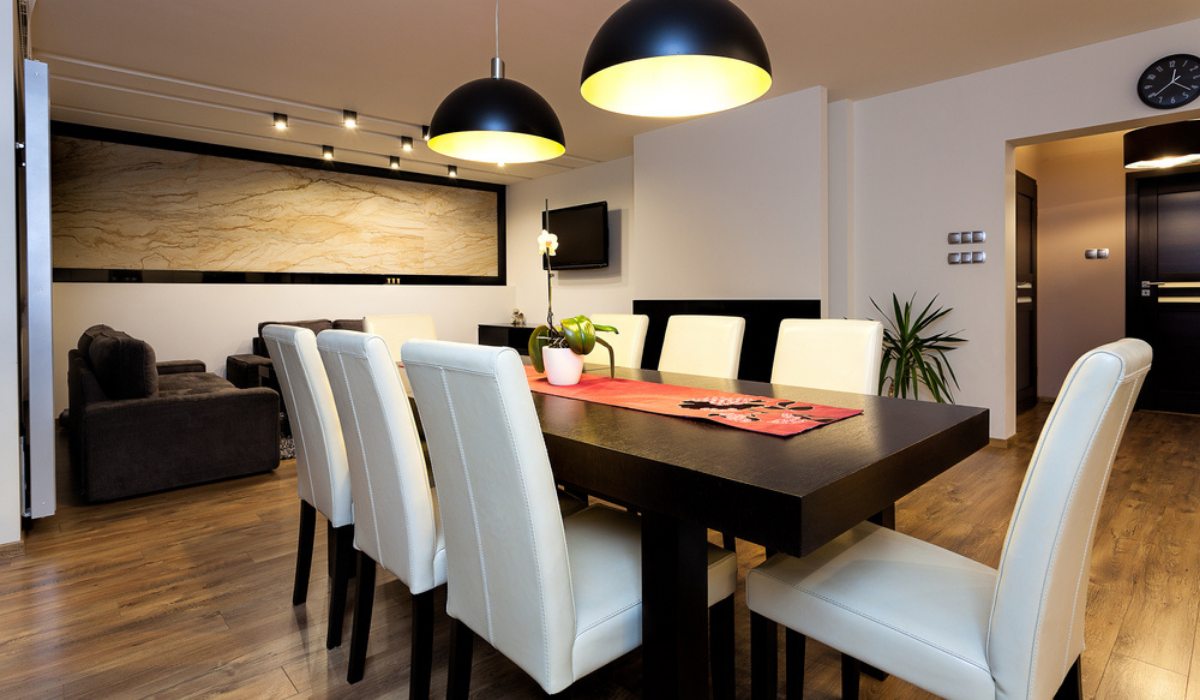
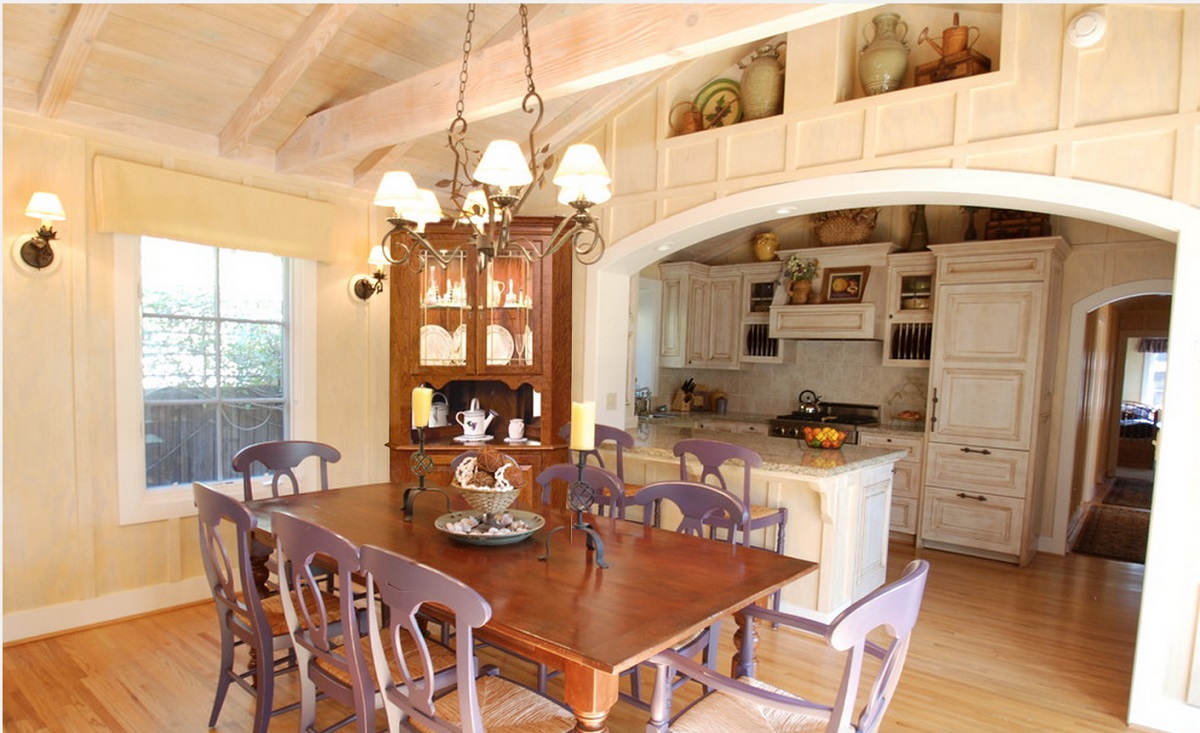
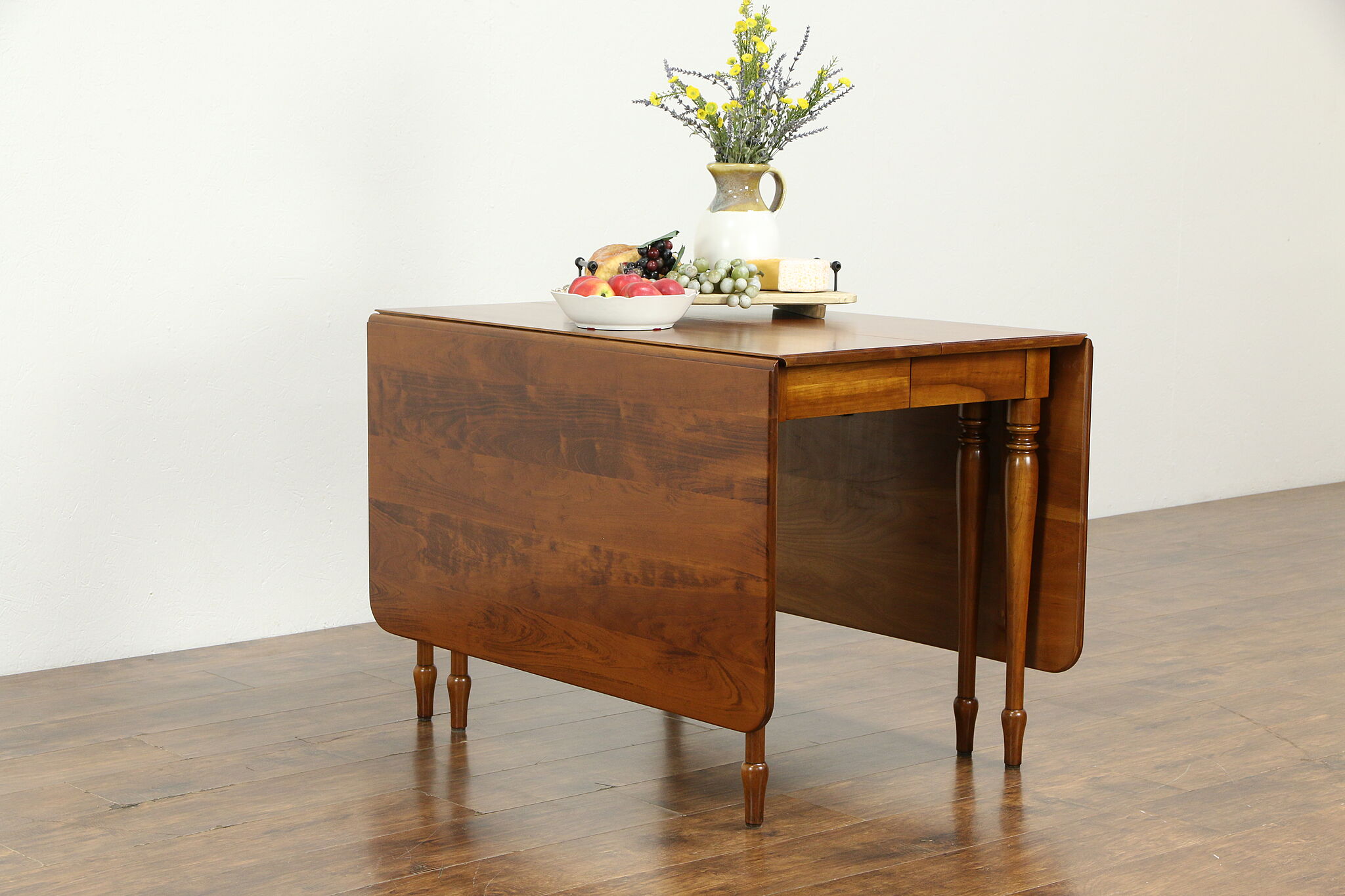
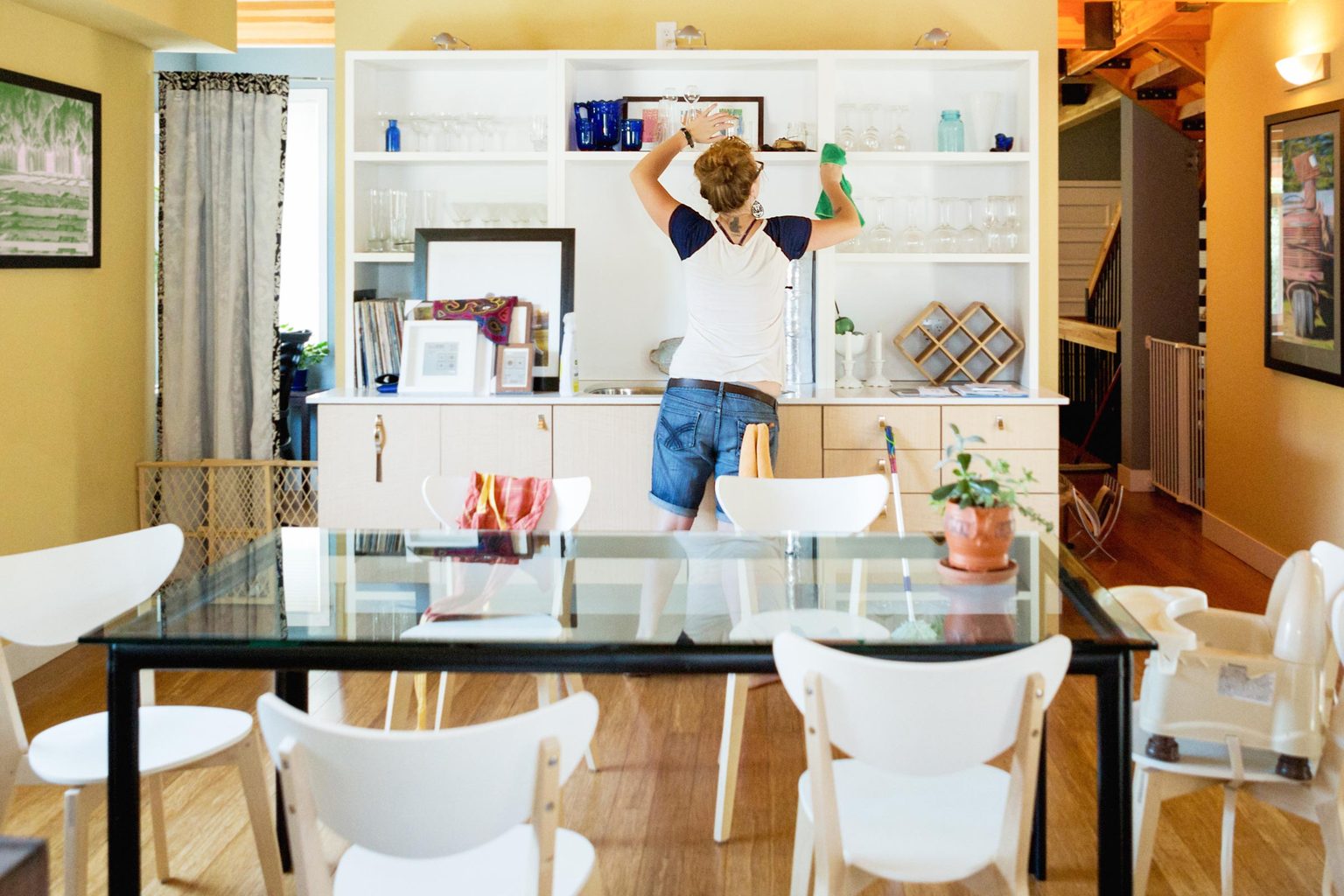
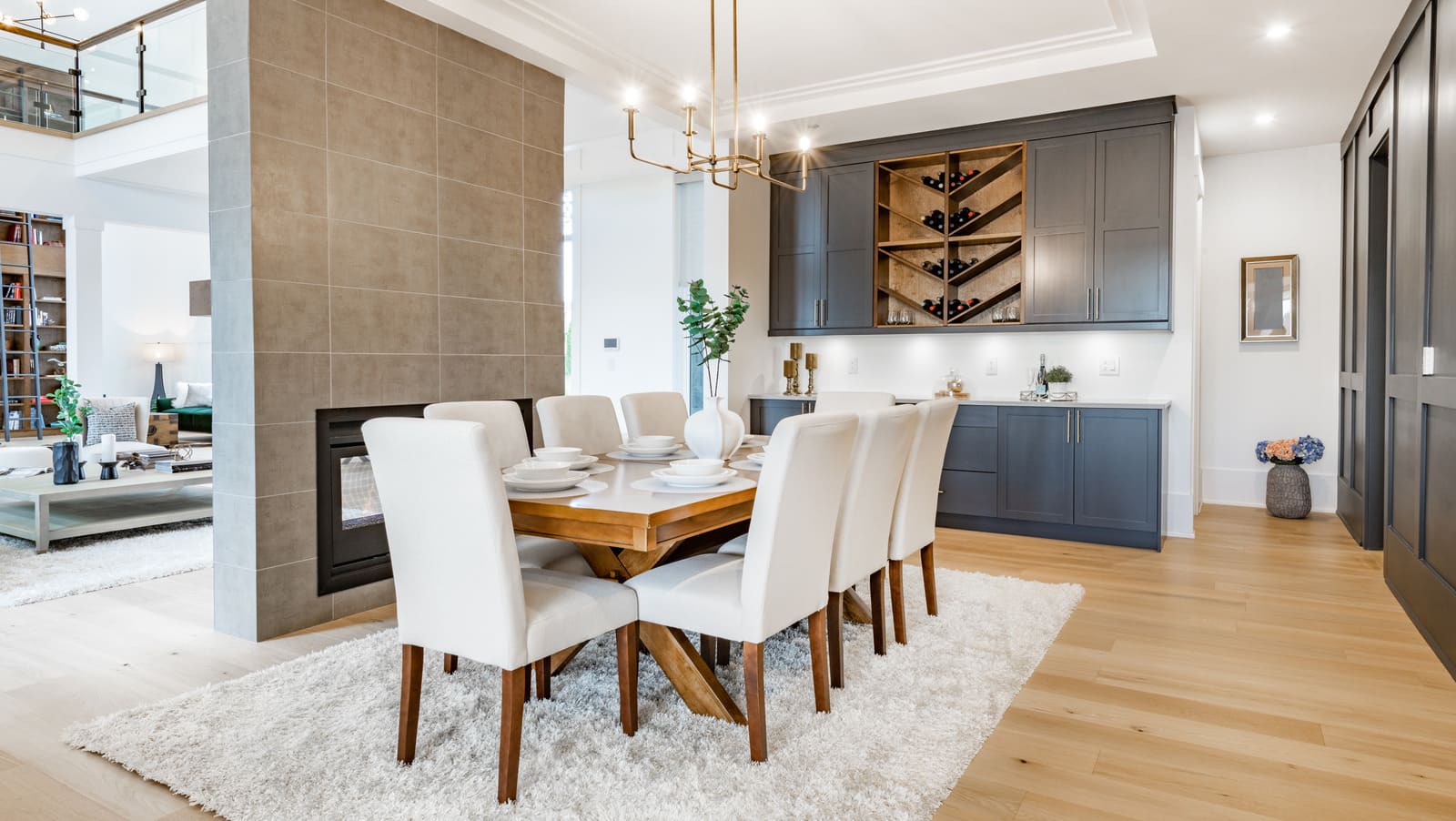
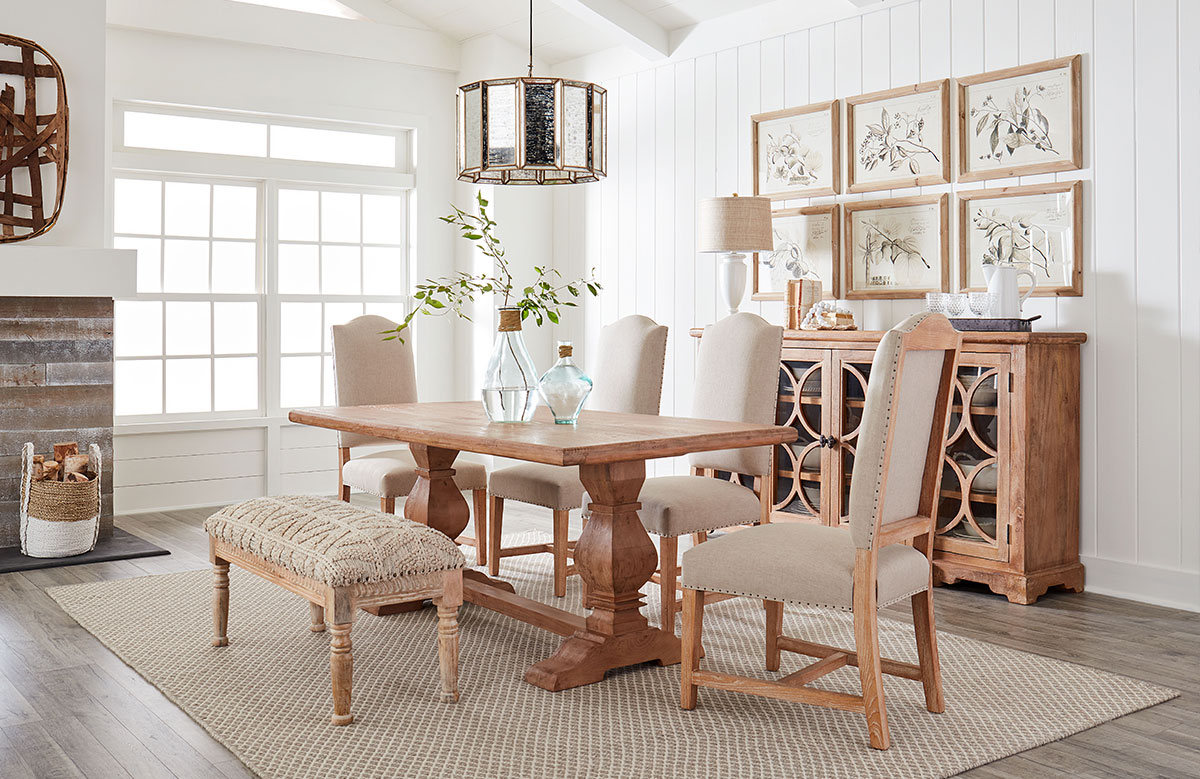
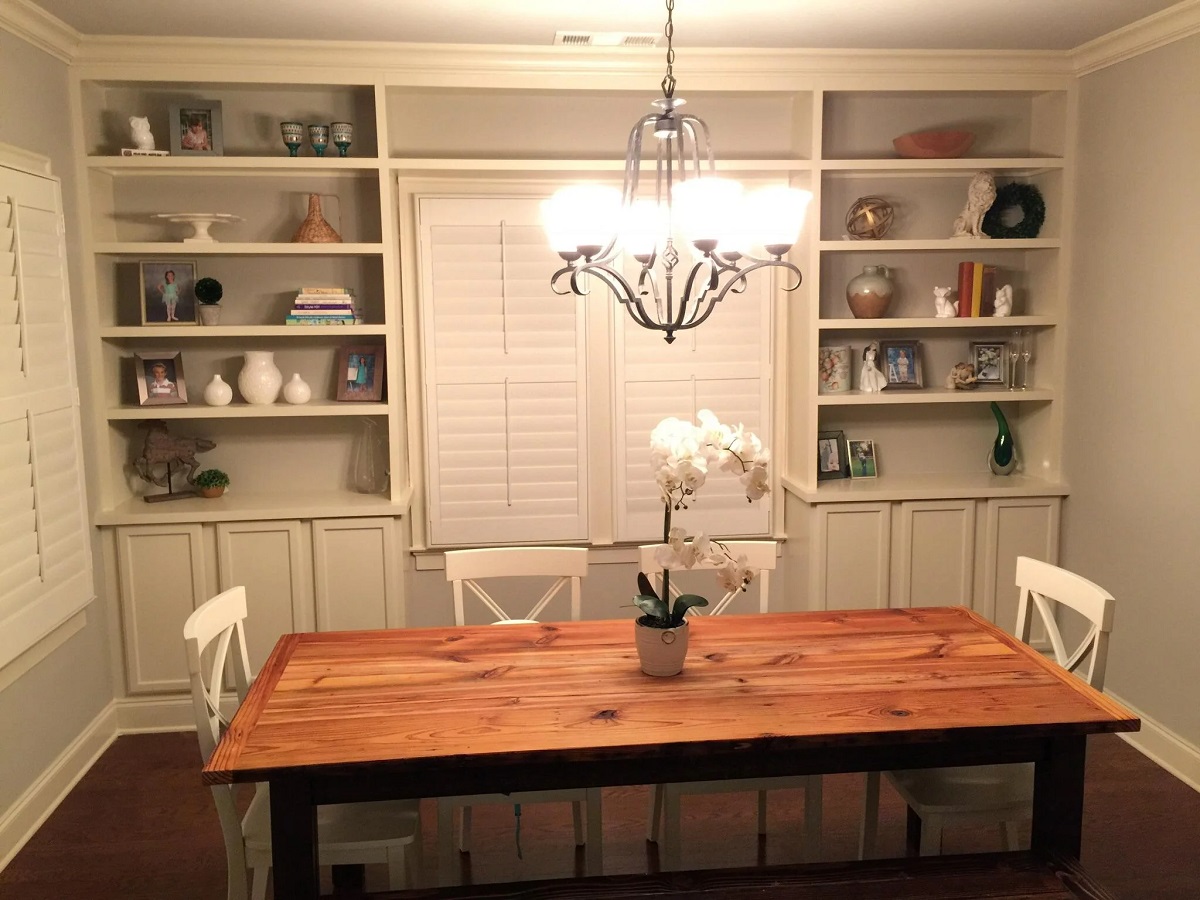
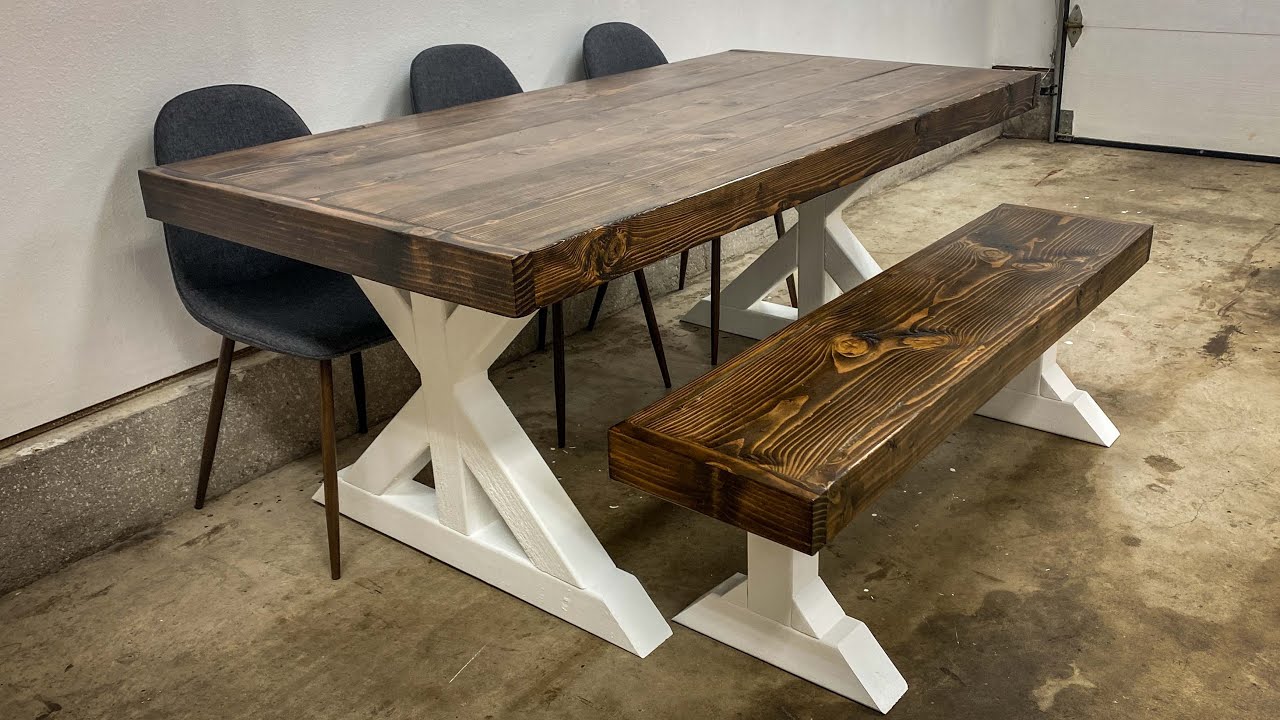
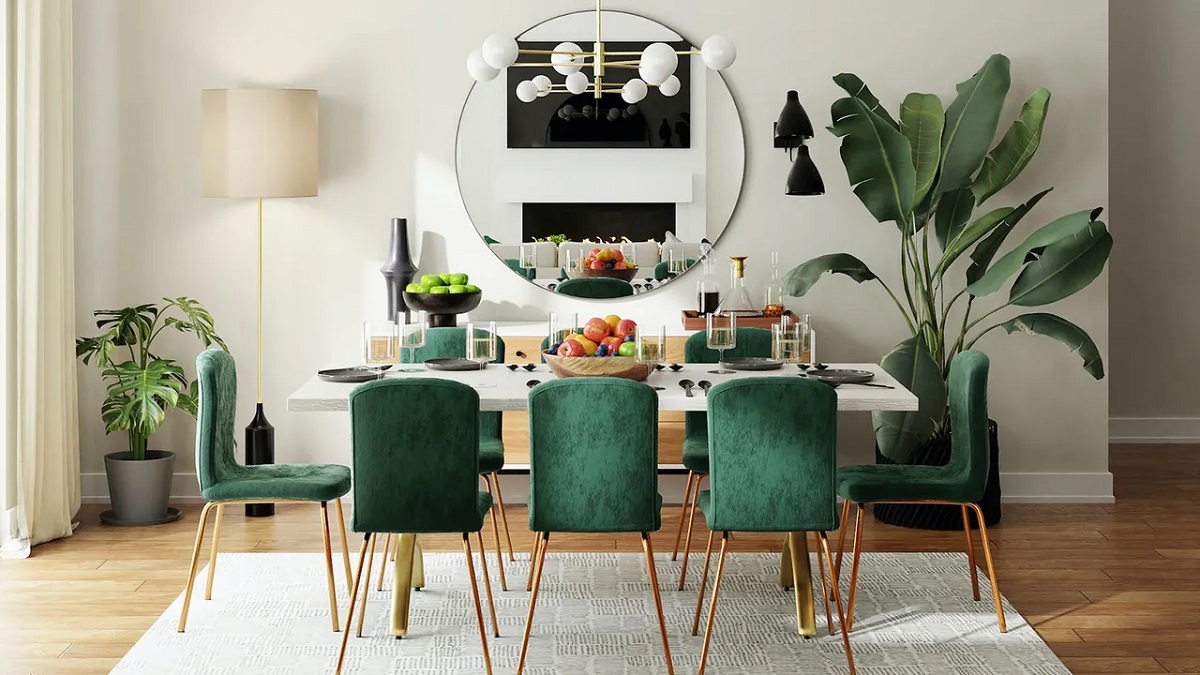
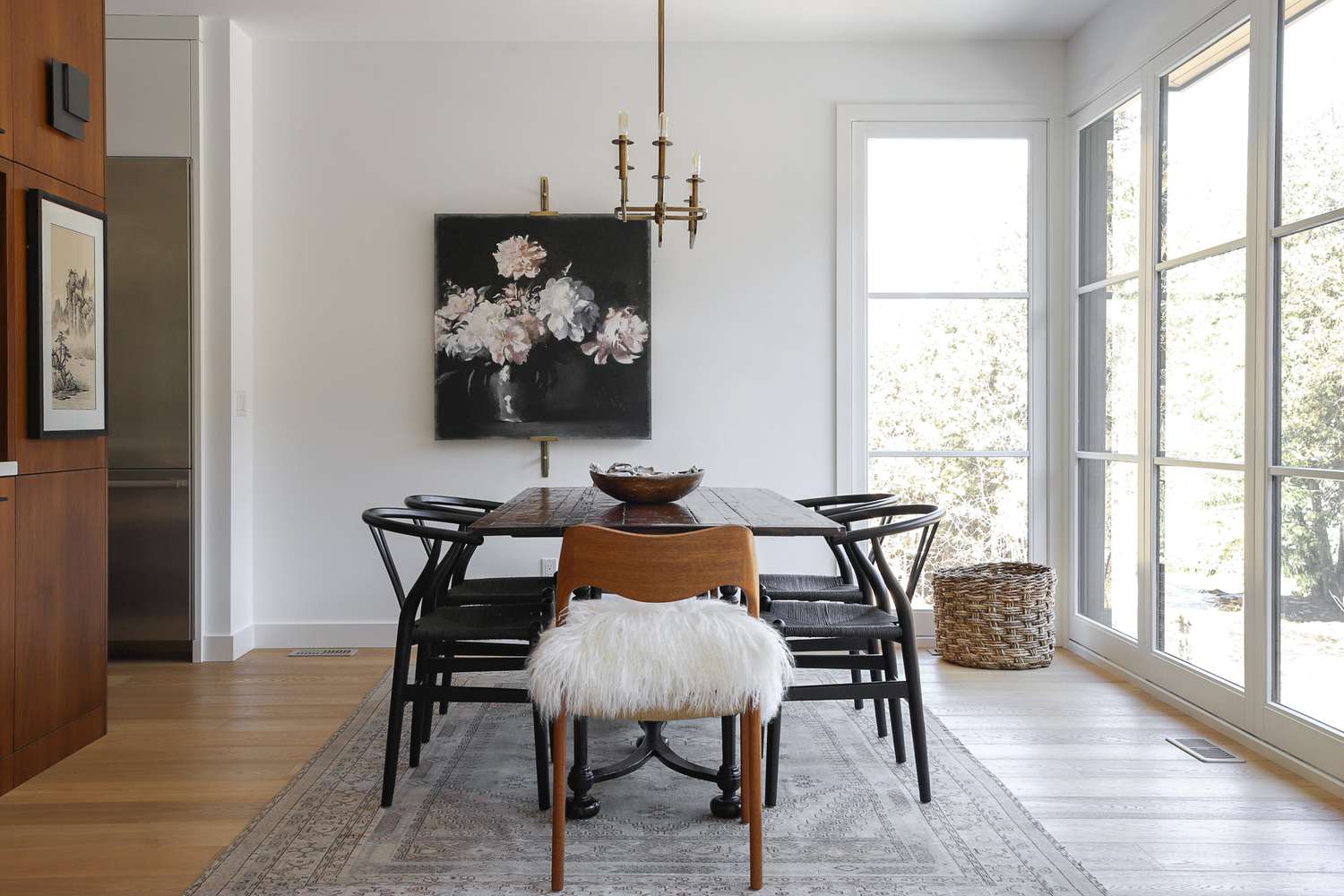
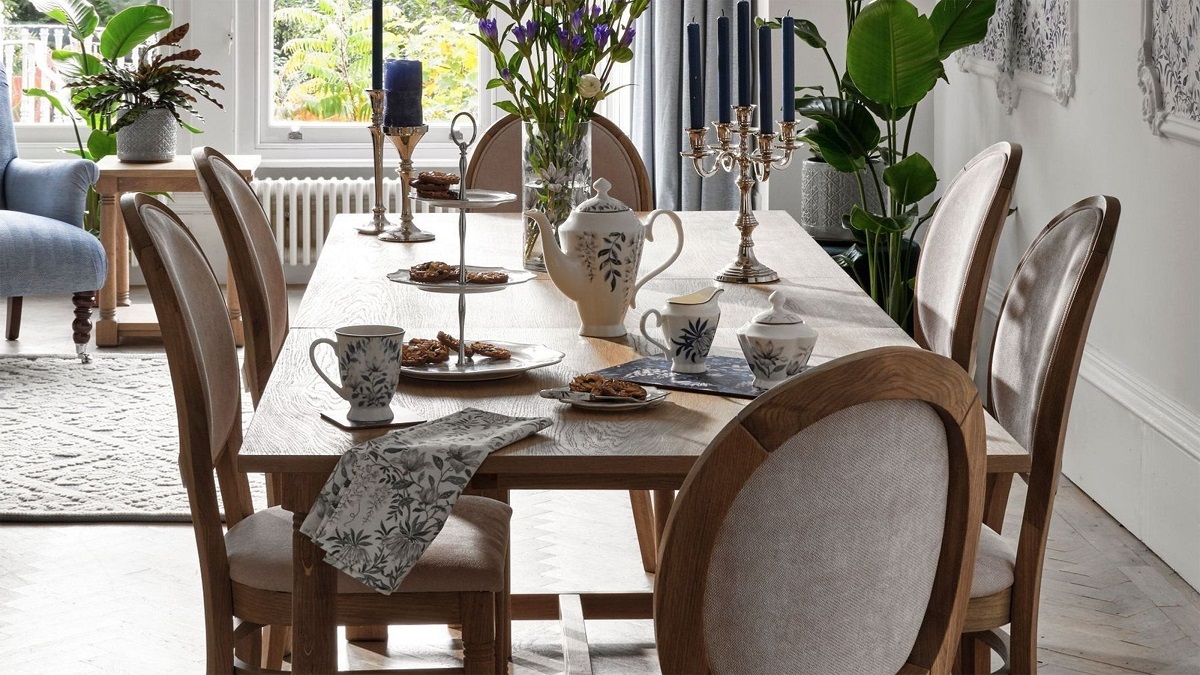
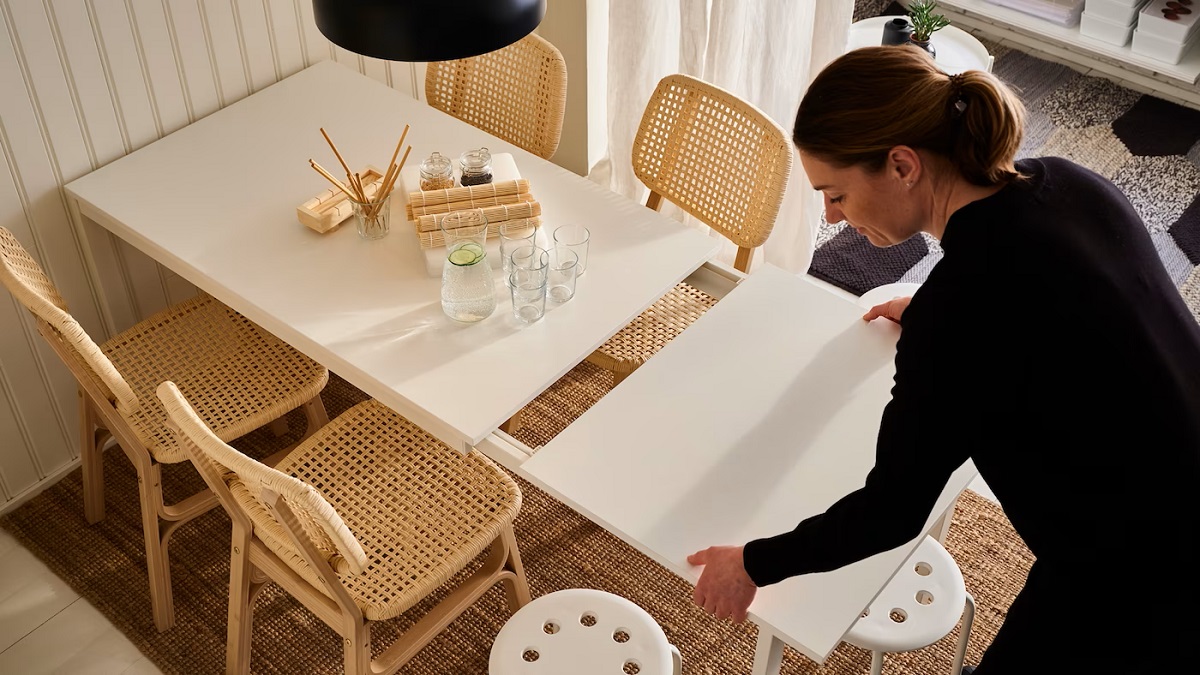
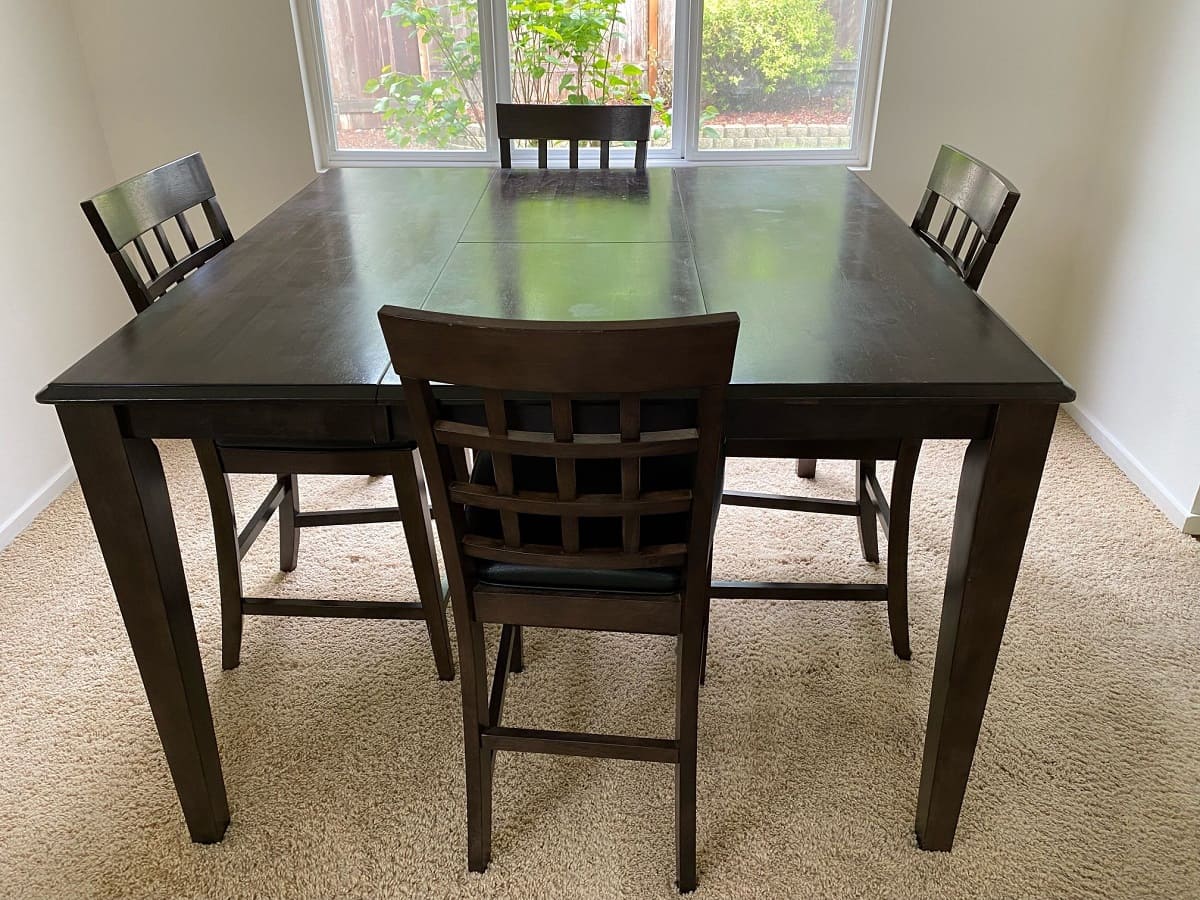

0 thoughts on “How Much Is An Antique Dining Room Set Worth”